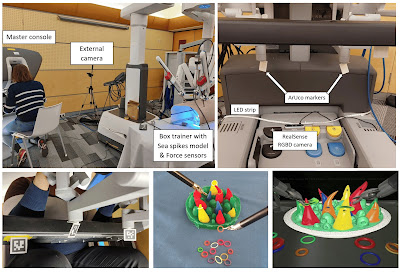Article intro - Early clinical da Vinci results from Hungary
Abstract
Robot-Assisted Minimally Invasive Surgery (RAMIS) marks a paradigm shift in surgical procedures, enhancing precision and ergonomics. Concurrently it introduces complex stress dynamics and ergonomic challenges regarding the human–robot interface and interaction. This study explores the stress-related aspects of RAMIS, using the da Vinci XI Surgical System and the Sea Spikes model as a standard skill training phantom to establish a link between technological advancement and human factors in RAMIS environments. By employing different physiological and kinematic sensors for heart rate variability, hand movement tracking, and posture analysis, this research aims to develop a framework for quantifying the stress and ergonomic loads applied to surgeons. Preliminary findings reveal significant correlations between stress levels and several of the skill-related metrics measured by external sensors or the SURG-TLX questionnaire. Furthermore, early analysis of this preliminary dataset suggests the potential benefits of applying machine learning for surgeon skill classification and stress analysis. This paper presents the initial findings, identified correlations, and the lessons learned from the clinical setup, aiming to lay down the cornerstones for wider studies in the fields of clinical situation awareness and attention computing.
Keywords: robot-assisted minimally invasive surgery; human–robot cooperation; stress analysis; non-technical surgical skills; clinical situation awareness
Source: MDPI Sensors



Comments